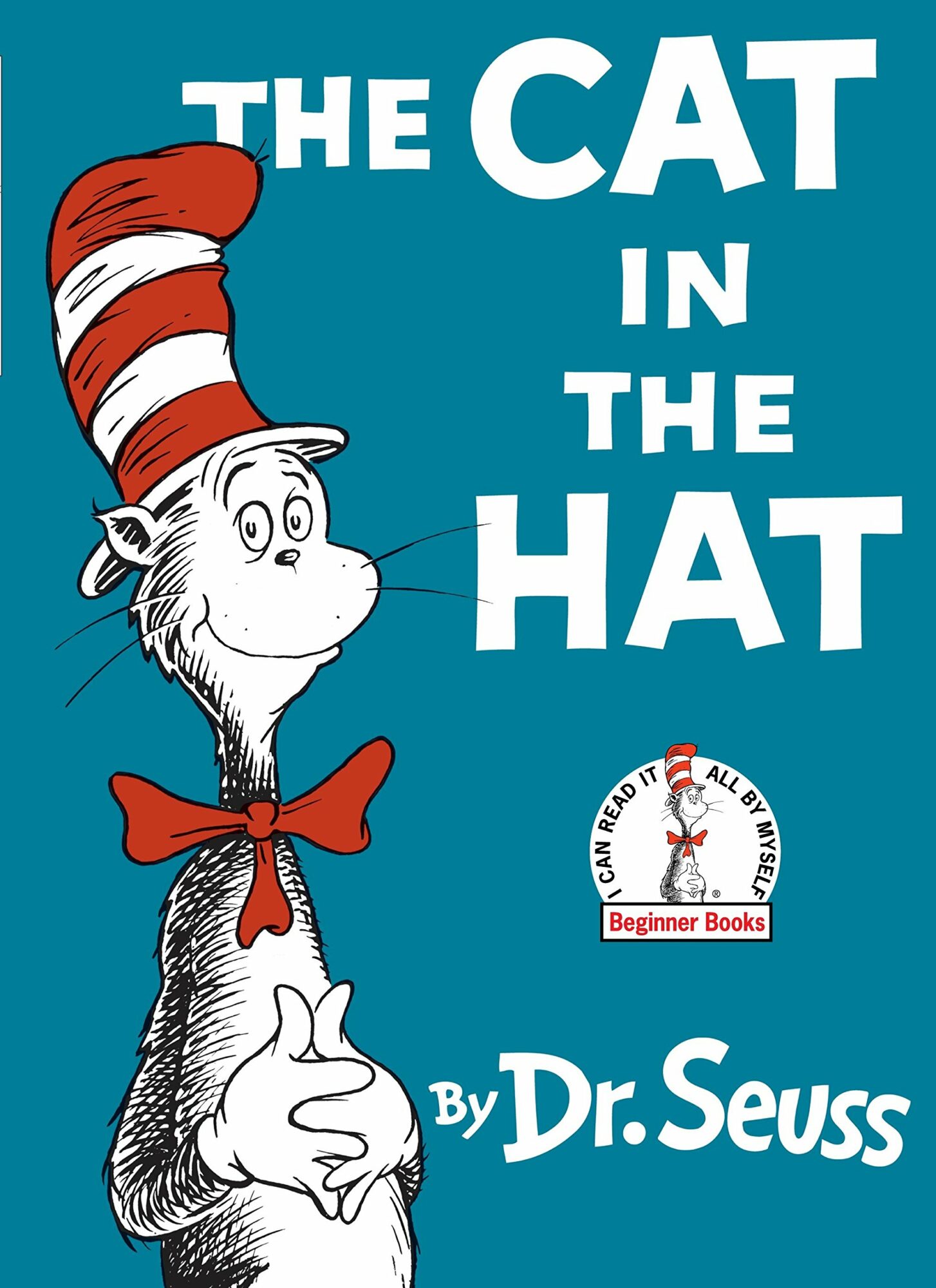The Cat in the Hat is a 1957 children’s book written and illustrated by the American author Theodor Geisel, using the pen name Dr. Seuss. I keep mentioning this book as an archetypal example of the carnivalesque story subgenre in children’s literature but I’ve never actually broken that down, until now!
THE REVOLUTIONARY POWER OF THE CAT IN THE HAT
”The Cat in the Hat” has become such an integral part of the culture that it’s easy to minimize its revolutionary power, both as a reading experience and as a publishing event. ”It’s spooky,” says Roger Sutton, the editor in chief of the Horn Book Inc., of his first response to the cat’s misrule. ”But you can’t wait to read it again.” Jon Scieszka and Lane Smith, who collaborated on such postmodern children’s fables as ”The True Story of the Three Little Pigs” and ”The Stinky Cheese Man,” can’t imagine their own work without the good doctor’s example. ”At the time, to suggest that kids would misbehave was crazy radical,” says Scieszka, who has made a career of insisting that they do (and perhaps encouraging it). ”His stuff was weird,” says Smith. ”The language was sophisticated, but any child could understand it. The illustrations were from Mars. Seuss was sly. His books had a message, but at the same time, in ‘Cat in the Hat’ you have Thing One and Thing Two, who come over and trash the house. It was shocking at the time, but it was a watershed event.”
A.O. Scott, Sense and Nonsense, NYT Magazine
I also know more than one mother who refers to her children as Thing 1 and Thing 2, a convenient anonymising shorthand when talking about your children on social media.
First, how’s this for creepy? Surely this is fan art, you say? Nope, Dr Seuss himself did it.
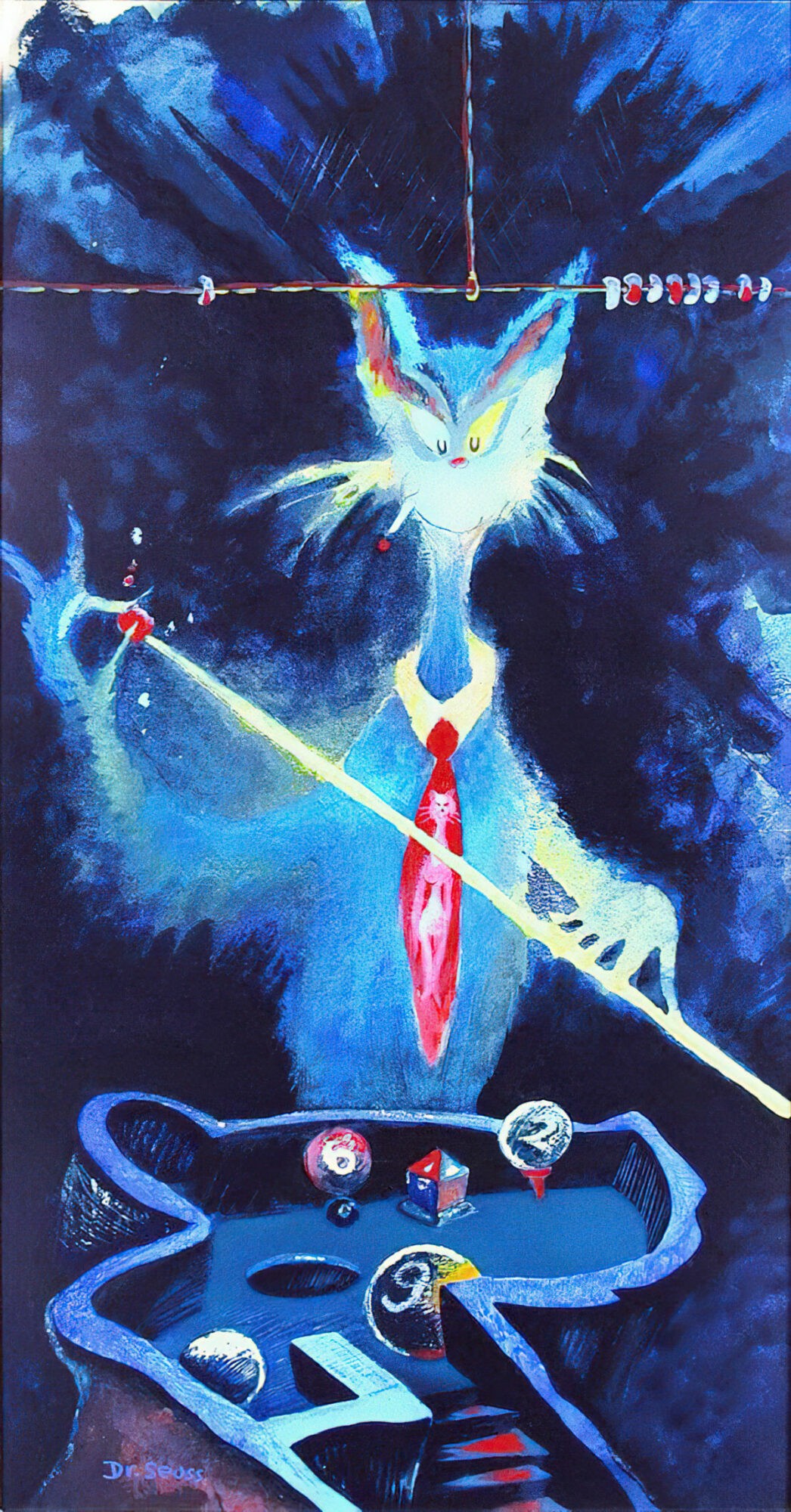
Not so cute now, is he? The Mike Myers version from the 2003 live action film adaptation doesn’t look nearly so creepy. Not by comparison, anyhow.
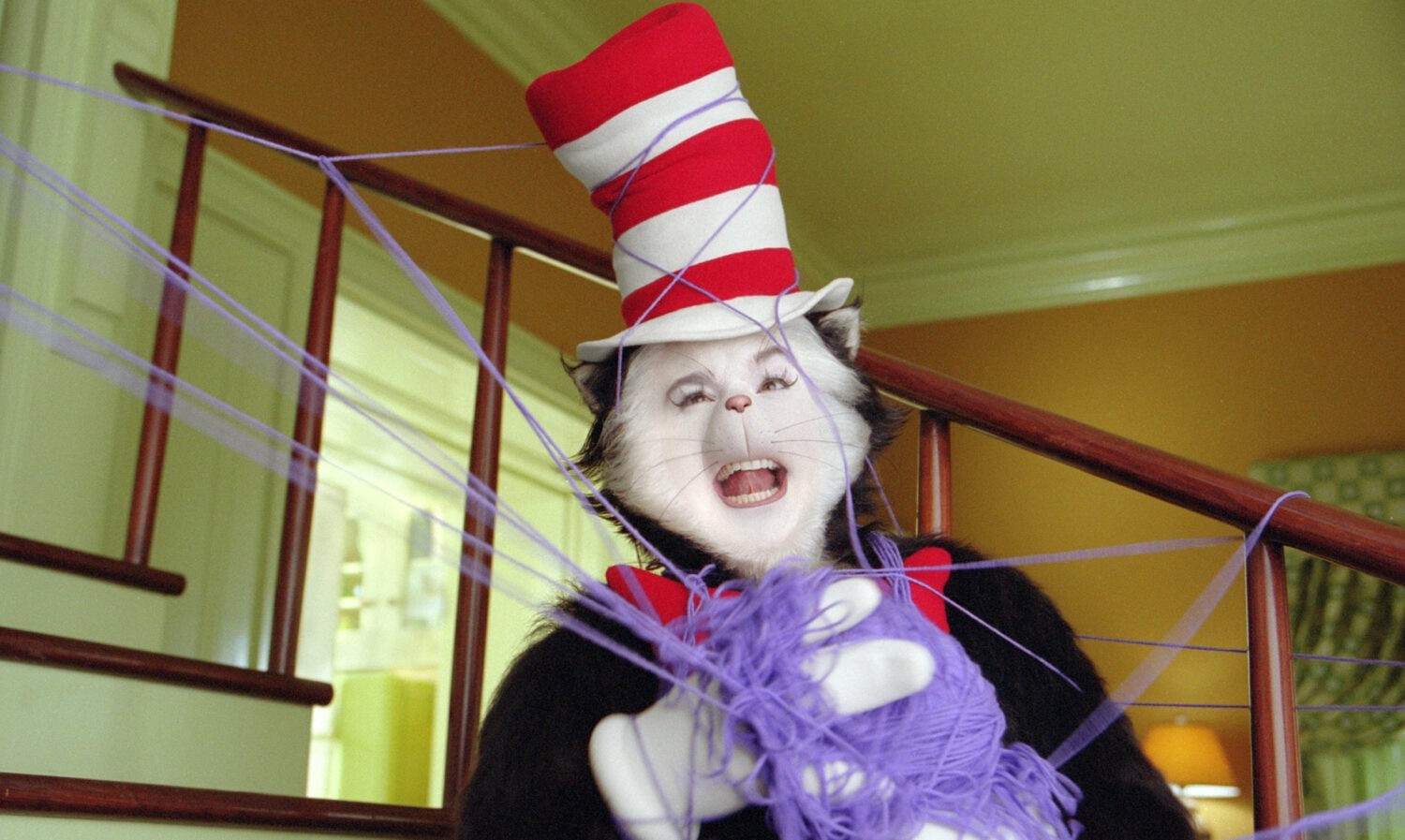
I cannot, will not [vom, blerch] recommend the movie. STEP AWAY FROM THE MOVIE.
CARNIVALESQUE STORY STRUCTURE OF THE CAT IN THE HAT
The Cat in the Hat … arrives with a loud bump one dull, rainy afternoon and lays waste to a family’s quiet house, despite the protests of an anxious fish and the two children, who fear they’ll be blamed for his mischief. They watch the cat, along with Thing One and Thing Two, wreak havoc, their eyes wide with shock, their mouths alarmed little o’s. With moral support from the fish and the aid of a giant net, they eventually put a stop to the cat’s rampage, but it remains their guilty secret — perhaps because he originated in their own unconscious thinker-uppers. On the last page, the mother’s foot crosses the front door threshold. (Like most Seuss parents, her face remains hidden, as if inviting the reader to fill in the blank.) ”Did you have any fun?” she asks her children. ”Tell me. What did you do?” Like Marco in ”Mulberry Street,” Sally and her brother are at a loss. ”What would YOU do/if your mother asked YOU?”
A.O. Scott, Sense and Nonsense, NYT Magazine
AN EVERY CHILD IS AT HOME
Especially in 20th century literature, there’s often a boy and a girl, meaning to represent ‘both’ genders (which reinforces a strict gender binary — different story).
In the uber carnivalesque story, the children are bored, often because it’s raining. Carnivalesque story structure or no, stories often begin because children are bored.
The classic visual trope: Looking out the window. (Another is sitting on the fence.)
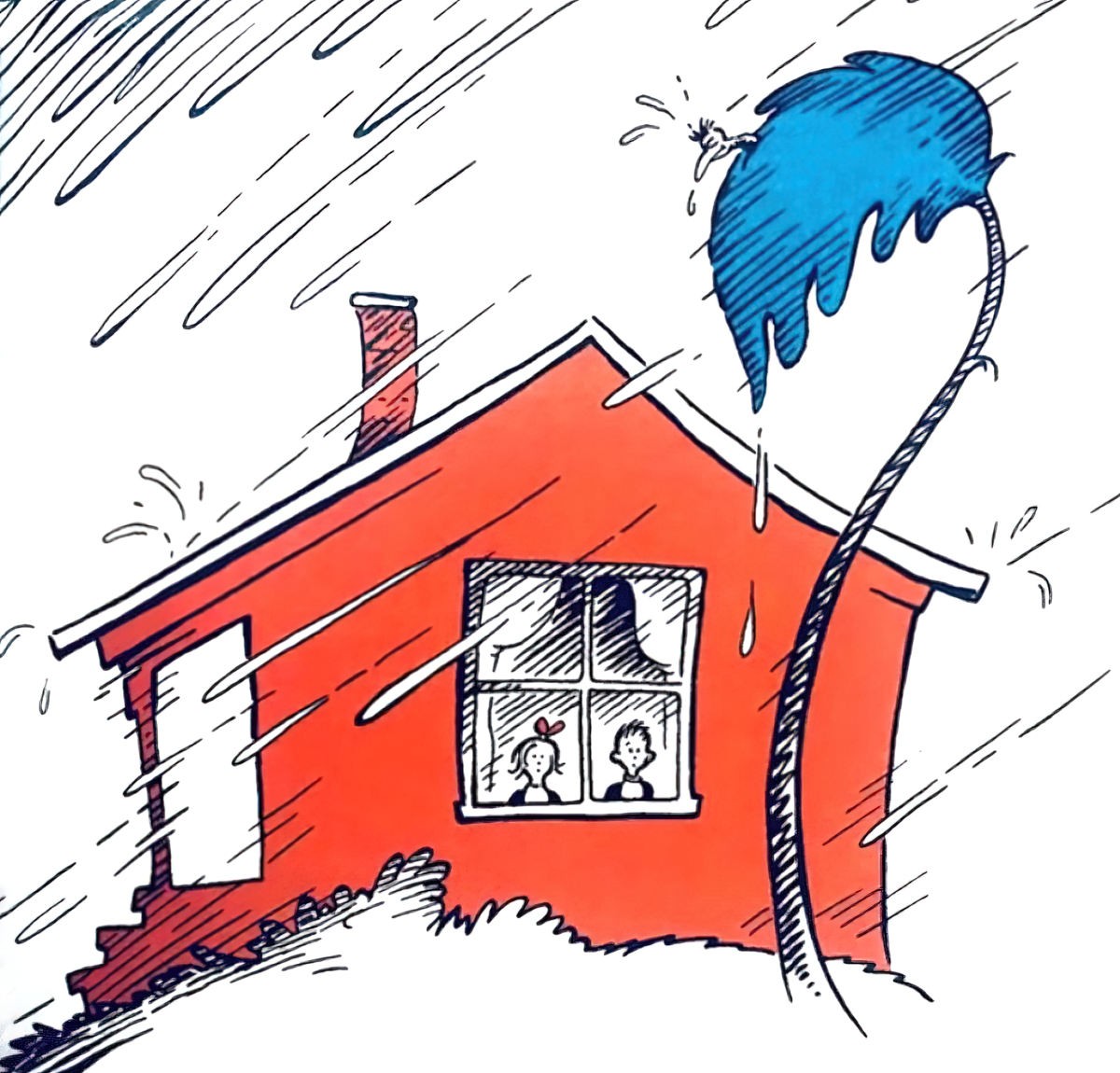
This trope is so important to the story, it is mandatory, even in a terrible movie adaptation.
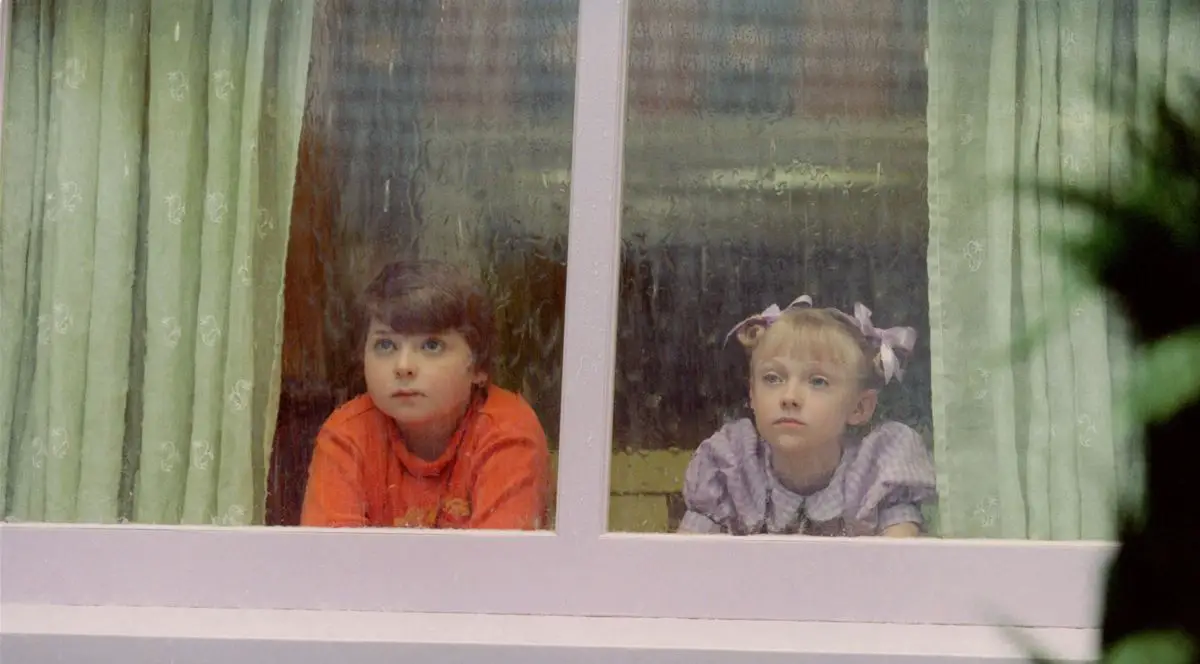
THE EVERY CHILD WISHES TO HAVE FUN.
This part of the story is folded into the gazing out the window scene, because what is the child thinking as they gaze? They want something to happen. Or they want to be elsewhere.
DISAPPEARANCE OR BACKGROUNDING OF THE HOME AUTHORITY FIGURE
The mother in The Cat In The Hat leaves to do errands. Who cares where she went, just so long as she’s gone!
Getting rid of authority figures is one of the main jobs of children’s authors. Children’s writers are also frequently parents and teachers themselves, and it goes against all instinct to put fictional children in peril.
But put them in peril unsupervised we must!
APPEARANCE OF AN ALLY IN FUN
The cat turns up. Ideally, there’s something memorable about this ally in fun. Obviously, with this guy it’s the iconic hat. The memorable thing might also be a catch-phrase.
It’s usually a ‘he’. We need far more femme-coded fun figures in children’s literature. Generally women are the authority figures, trained from a very young age to be little mothers. (See: The Female Maturity Formula, beloved by Pixar, in which girl characters are responsible for doing the homework, research, thinking behind getting air-headed boy characters out of trouble.)
- In Mercer Meyer’s Frog Goes To Dinner, the ally in fun is a frog.
- Sometimes it’s a pet who lives with you, like in Pettson and Findus or the cat in Rupert Can Dance.
HIERARCHY IS OVERTURNED. FUN ENSUES.
The cat makes a real mess of the house. This works really well because it’s what kids do naturally, without any outside help!
An interesting feature of The Cat In The Hat: The judgey goldfish. The goldfish functions as a Choric Figure, telling the children what readers are thinking, “You should not let strangers into the house!”
This is a form of lampshading, and also absolves the author of “encouraging children to let strangers into the house”. (Not how stories are interpreted, but heigh ho.)
So the cat isn’t too impressed with this judgey goldish so plays a game called “Up, up, up!” which is basically the cat dealing with the children’s conscience.
The conflict between the cat and the goldfish also adds what every story needs: opponents. Aligned with the readers, the children look on, aghast.
FUN BUILDS!
The Things appear. They run up and down the house with kites.
PEAK FUN!
Often at this point, objects and characters multiply. The mess is too big for the children to pick up themselves.
SURPRISE! (for the reader)
Often at this point, whatever measures are taken to rectify the situation make the situation even worse. The cat returns with a vehicle fitted with tidying-up arms.
But of all the fantasy vehicles I’d like to own myself, this one is it: a picker-up machine.
This section of the story is the hardest part for the writer. Almost anyone can write the first part of a carnivalesque story. But how do you end it? And not just end it, end it so that it’s surprising and fun and so that children will want to come back to the story, time and again?
Children’s authors continue to find new and inventive ways to write carnivalesque stories. Many of them have written carnivalesque stories which, dare I say it, are even more fun and surprising than this uber-carnivalesque example from Dr. Seuss himself.
- For a real master of surprise-at-the-end, check out Stuck by Oliver Jeffers.
- New Zealand’s Lynley Dodd writes about half of her super popular Hairy Maclary books with classic mythic structure, the other half as carnivalesque.
- Many picture books contain a carnivalesque sequence wrapped inside a classic mythic structure. Lynley Dodd does this. So does Margaret Wild in The Little Crooked House.
- Carnivalesque stories aren’t always full of fun and hi-jinx like The Cat In The Hat (exaggerated way past its fun in the movie adaptation). Some carnivalesque picturebooks are quiet and contemplative e.g. The Wreck of the Zephyr by Chris Van Allsburg. A Woggle of Witches by Adrienne Adams is about witches having fun at Halloween but is also at the quieter end of the carnivalesque spectrum.
- Stories featuring ‘naughty children’ are especially well-suited to the carnivalesque. There’s Edwardo, The Horriblest Boy In The Whole Wide World. Eloise by Kay Thompson and Hilary Knight is a good example of that. Eloise has her own imaginary ‘Cat in the Hat’, because she’s basically a lonely child, surrounded by adults who she doesn’t understand.
RETURN TO THE HOME STATE
Of course, the children never left home. The home state refers to the home as it was before. ♦
FURTHER READING
Was the Cat in the Hat Black?: The Hidden Racism of Children’s Literature, and the Need for Diverse Books
Racism is resilient, duplicitous, and endlessly adaptable, so it is no surprise that America is again in a period of civil rights activism. A significant reason racism endures is because it is structural: it’s embedded in culture and in institutions. One of the places that racism hides-and thus perhaps the best place to oppose it-is books for young people.
Was the Cat in the Hat Black?: The Hidden Racism of Children’s Literature, and the Need for Diverse Books (Oxford UP, 2017) presents five serious critiques of the history and current state of children’s literature tempestuous relationship with both implicit and explicit forms of racism. The book fearlessly examines topics both vivid-such as The Cat in the Hat’s roots in blackface minstrelsy-and more opaque, like how the children’s book industry can perpetuate structural racism via whitewashed covers even while making efforts to increase diversity. Rooted in research yet written with a lively, crackling touch, Nel delves into years of literary criticism and recent sociological data in order to show a better way forward. Though much of what is proposed here could be endlessly argued, the knowledge that what we learn in childhood imparts both subtle and explicit lessons about whose lives matter is not debatable. The text concludes with a short and stark proposal of actions everyone-reader, author, publisher, scholar, citizen- can take to fight the biases and prejudices that infect children’s literature. While Was the Cat in the Hat Black? does not assume it has all the answers to such a deeply systemic problem, its audacity should stimulate discussion and activism.
New Books Network
